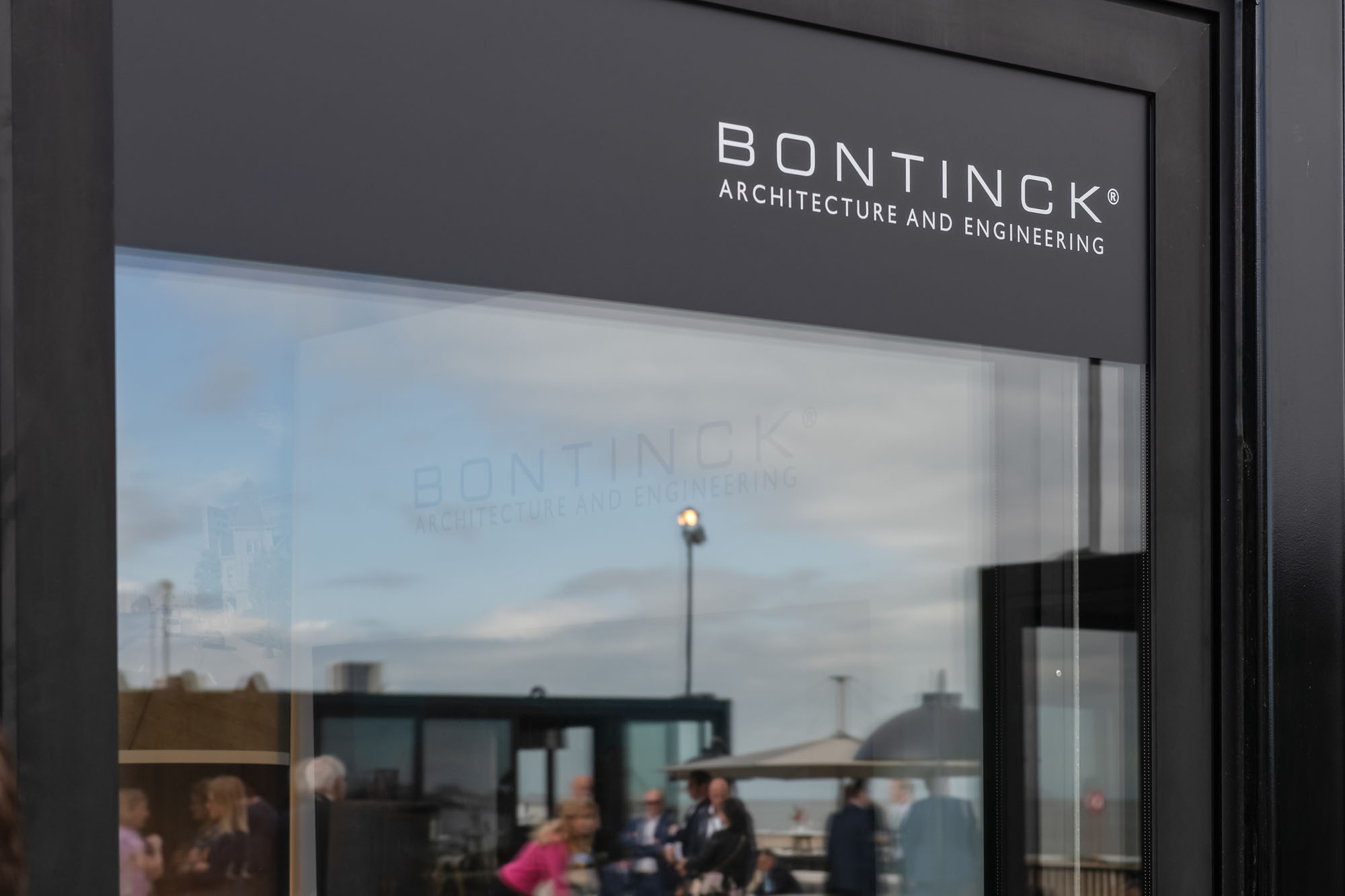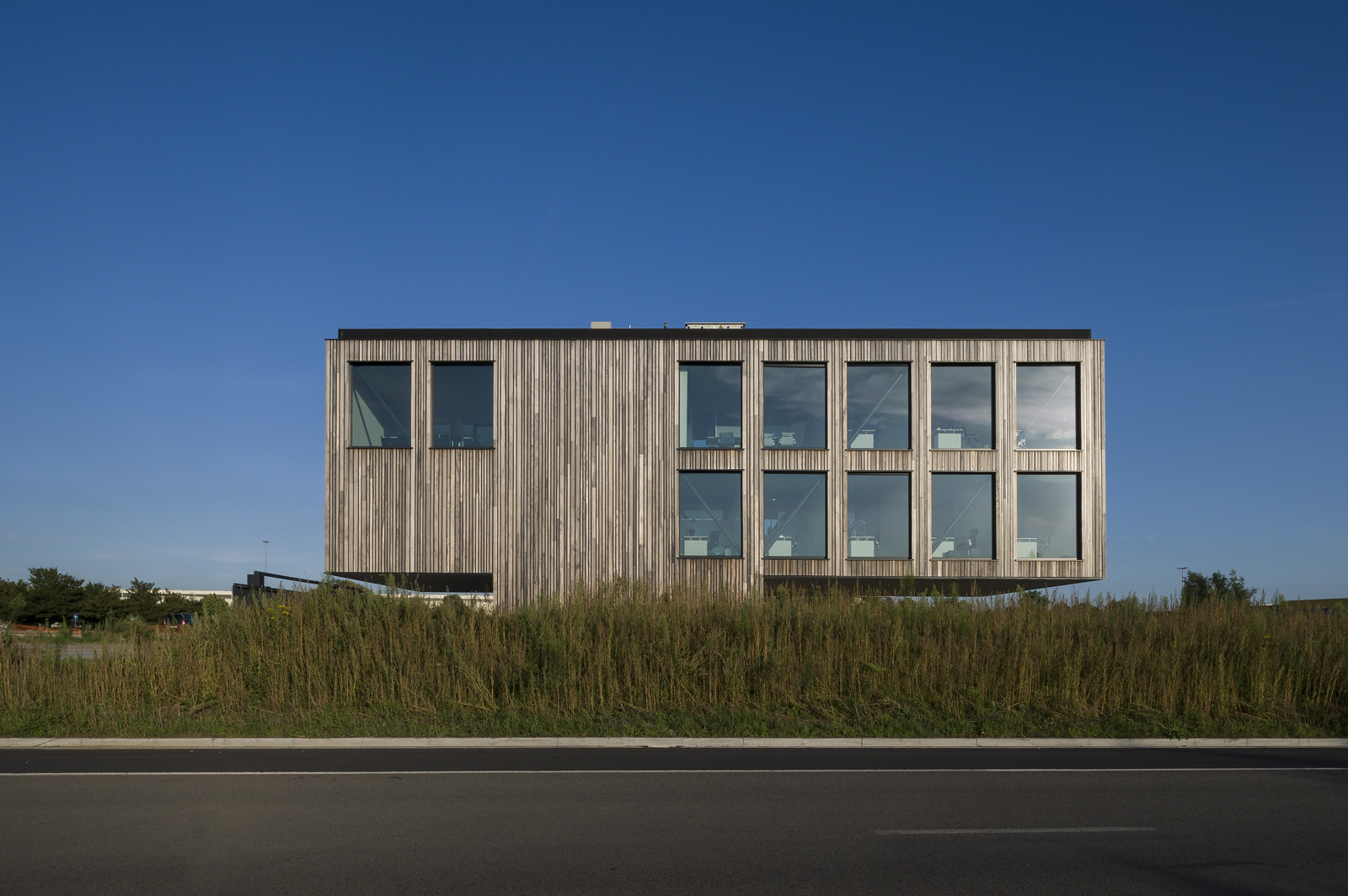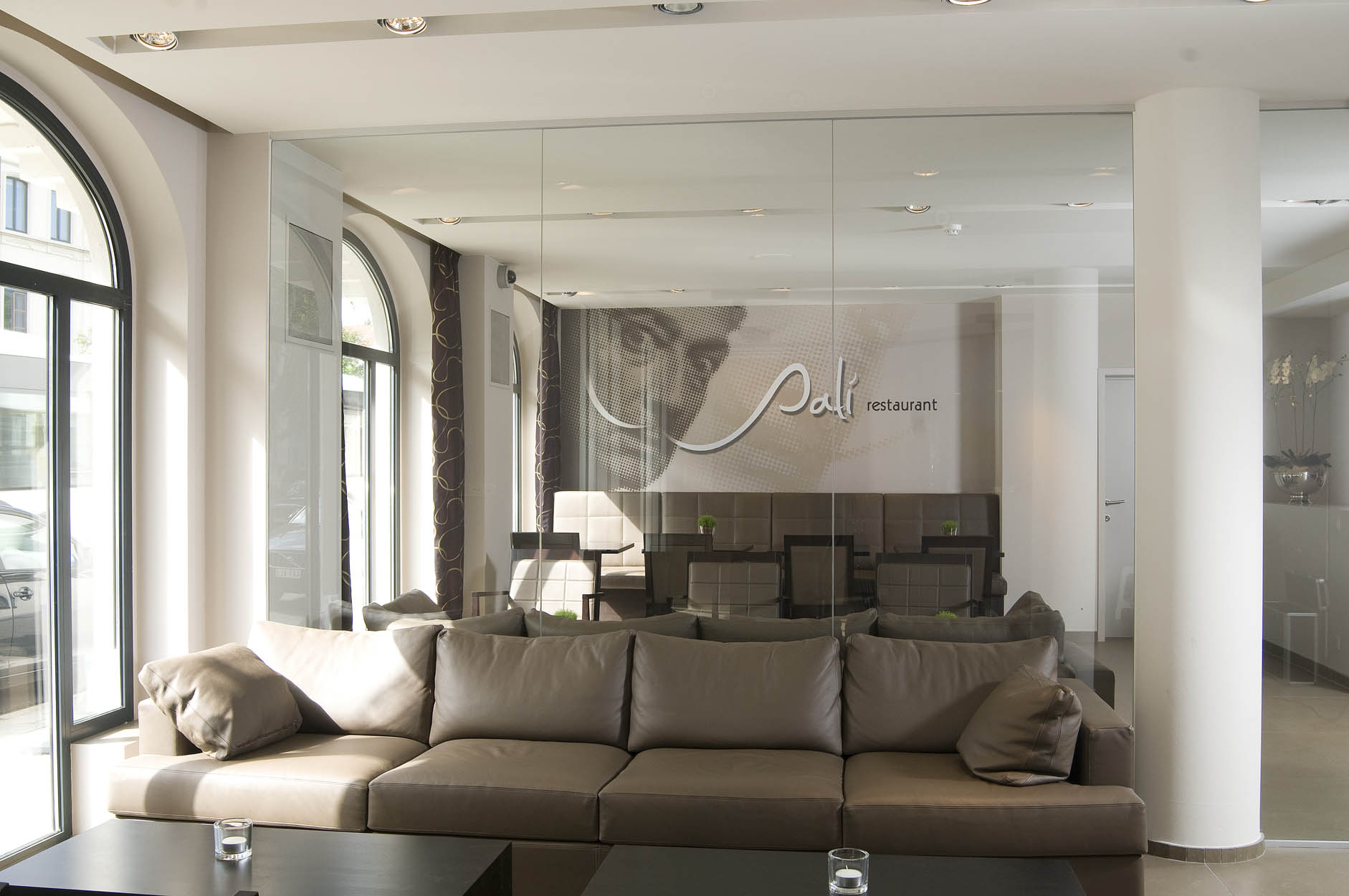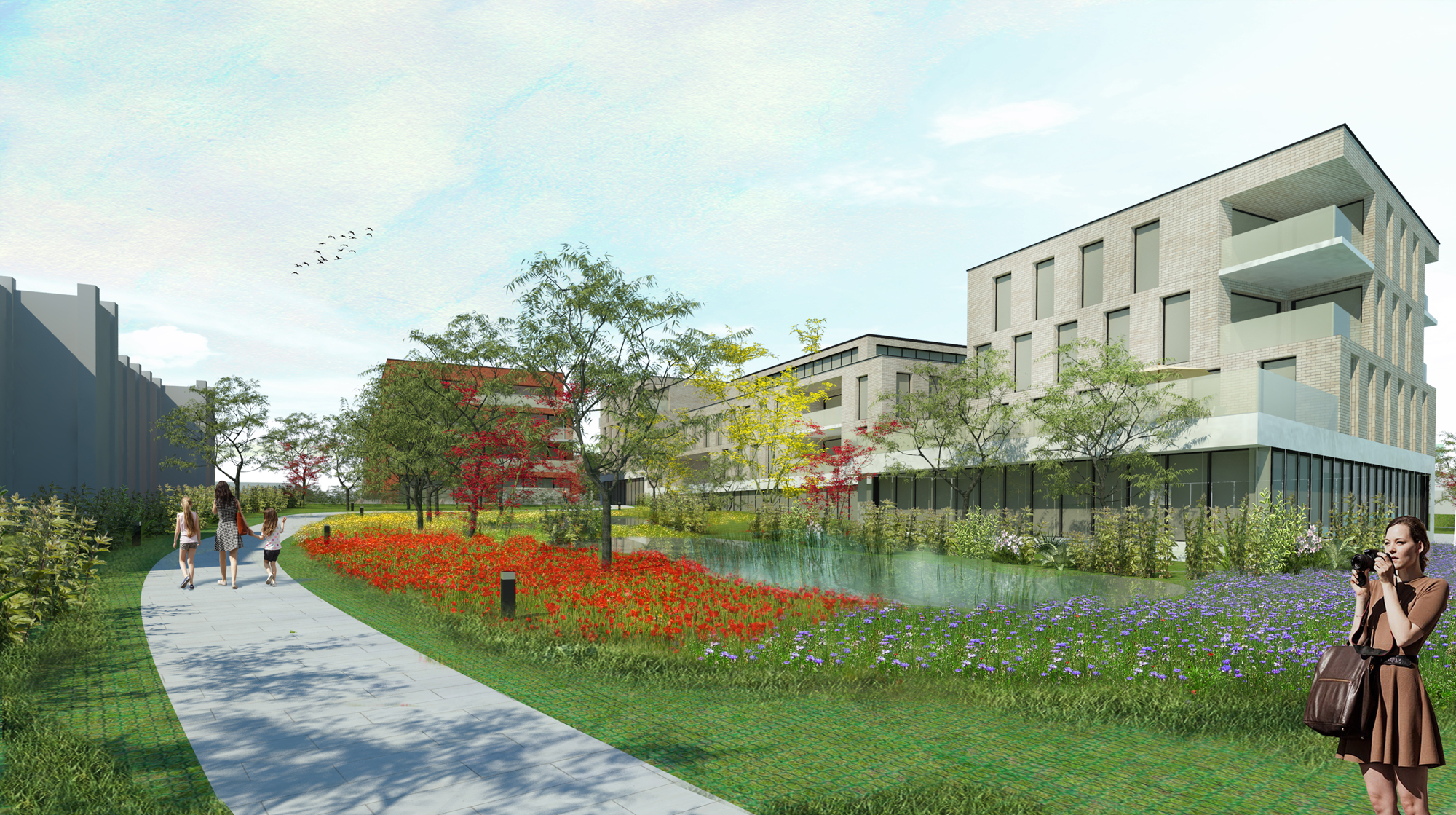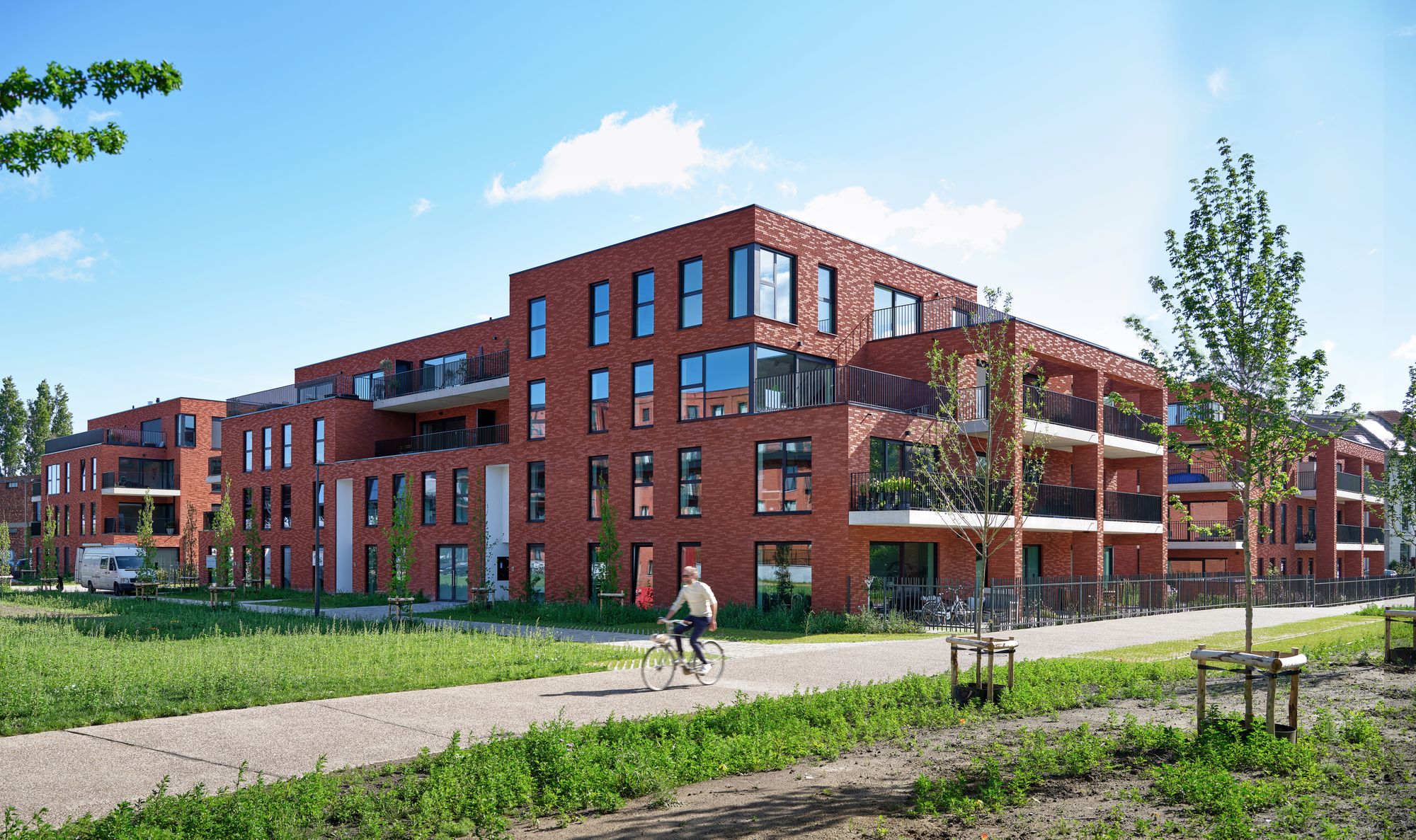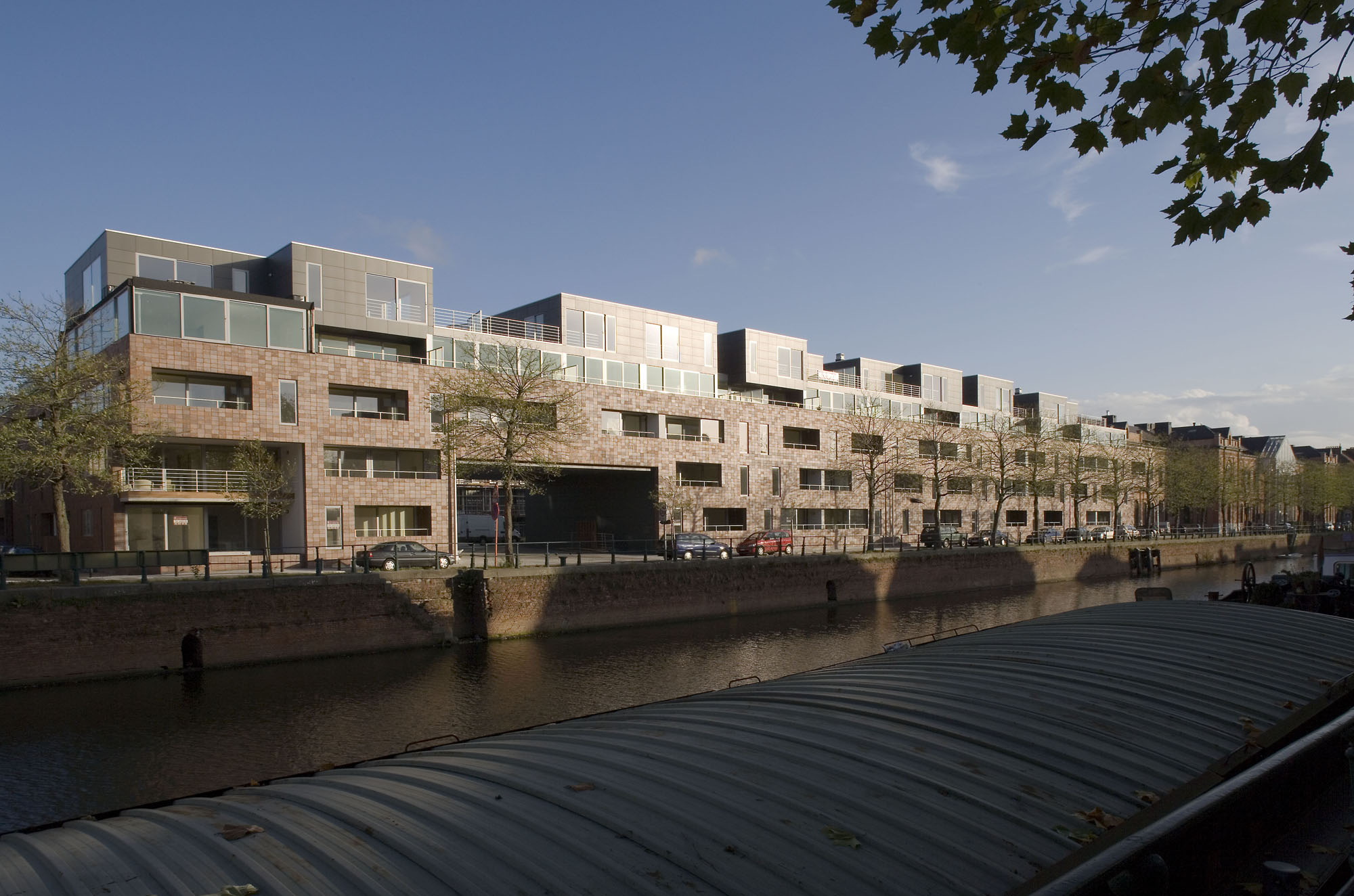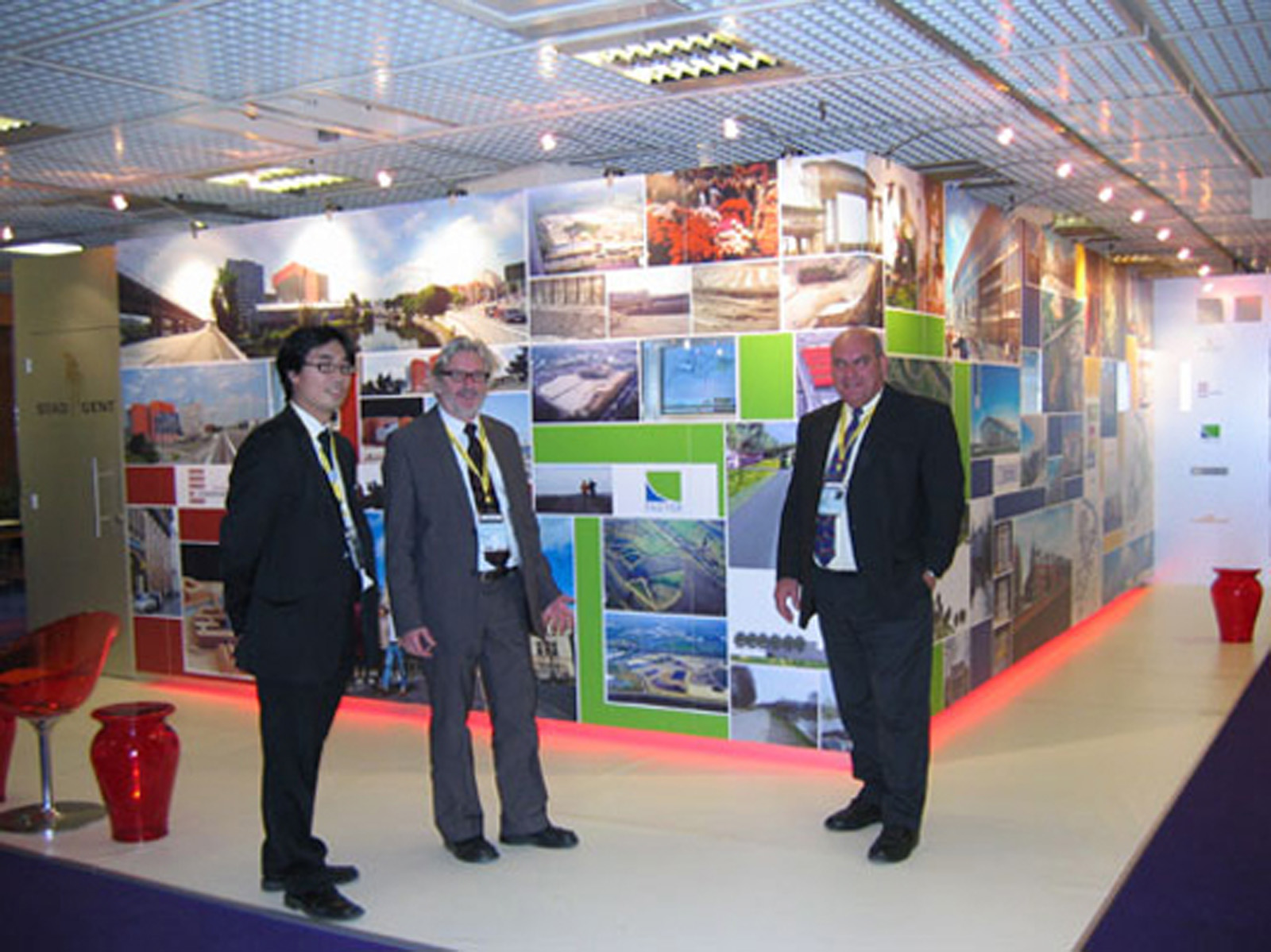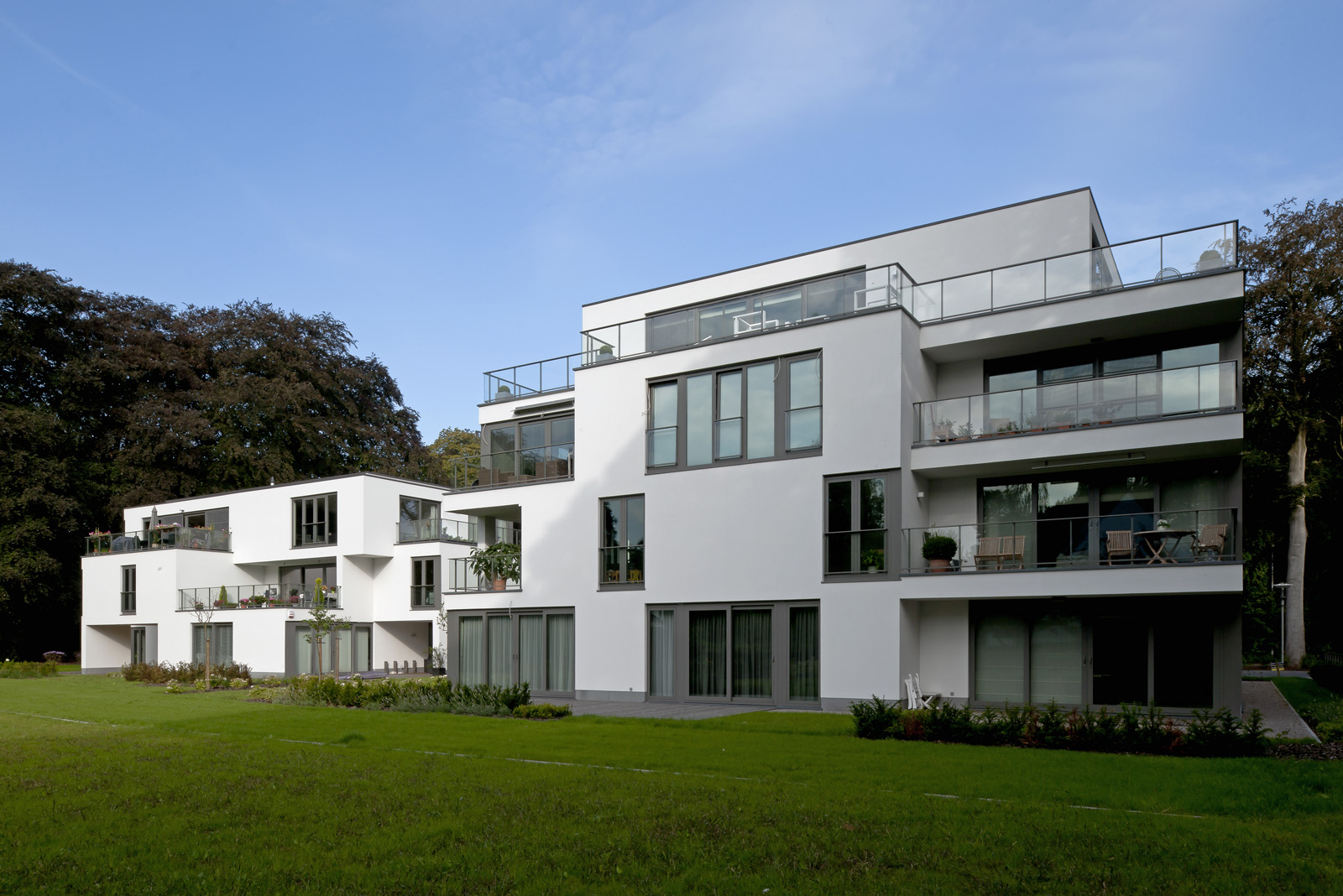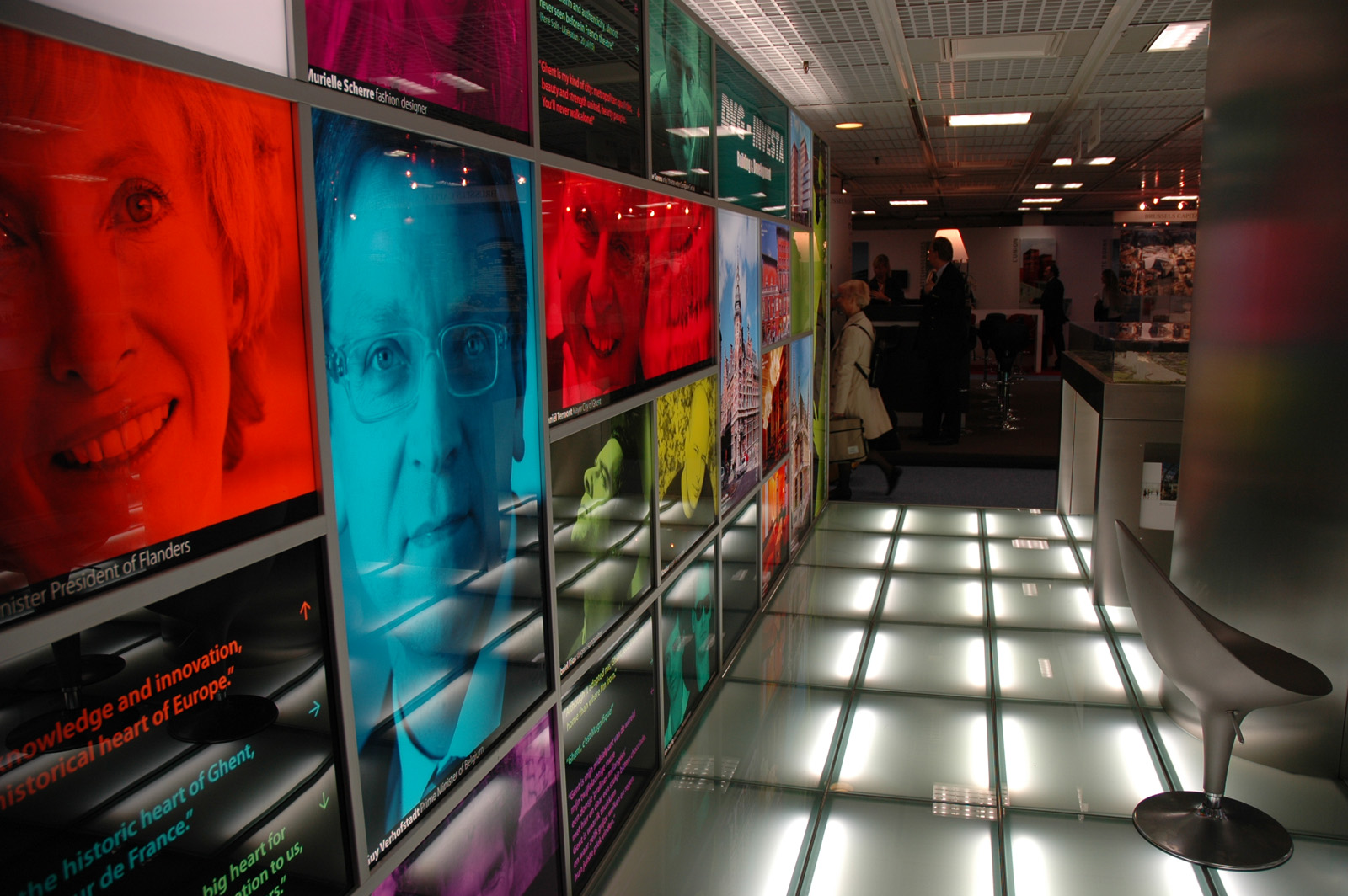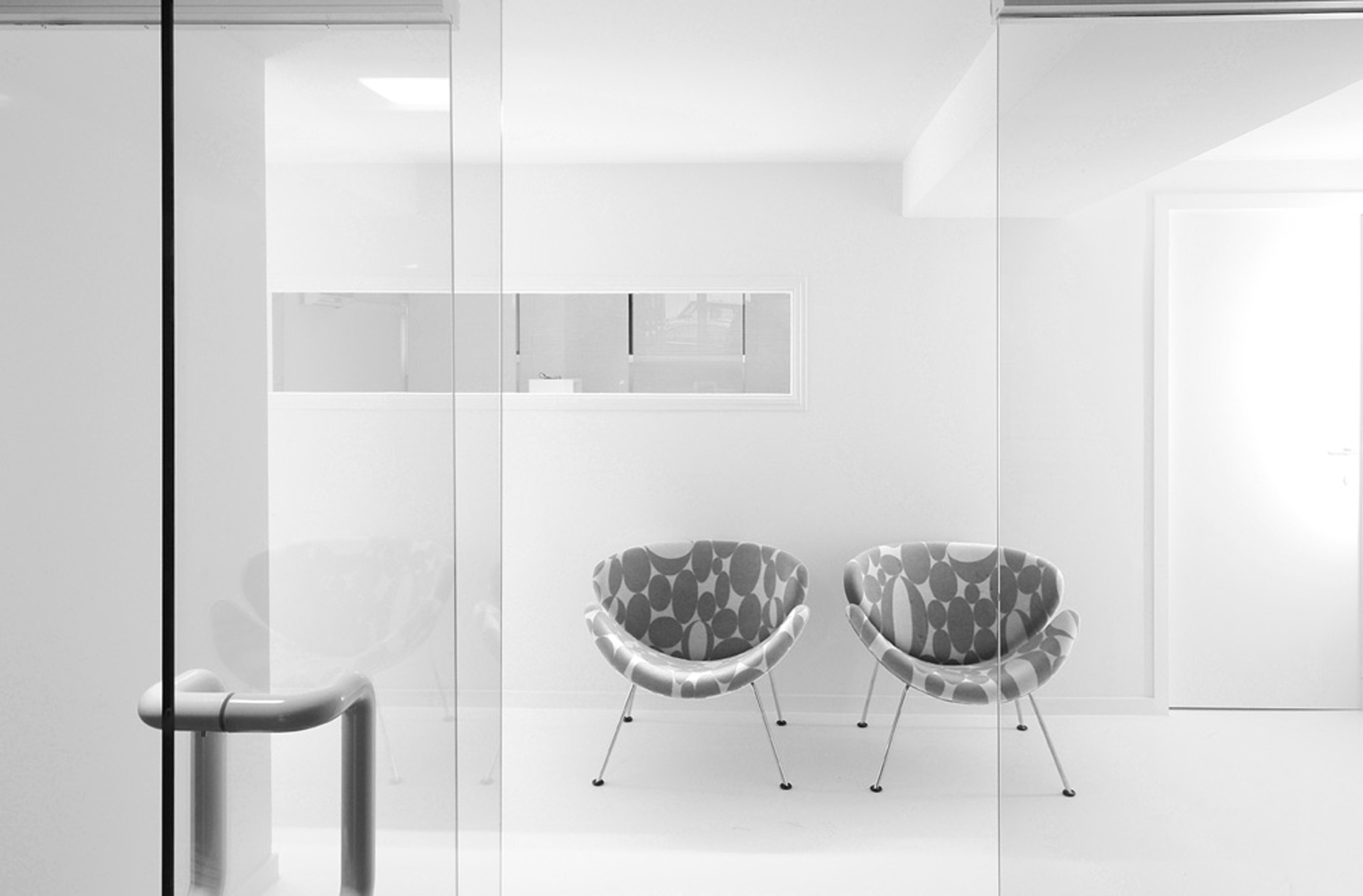-
Hof van Achten
-
3 multi-family dwelling with 43 units and 1 consulting space.
-
approx. 4659 m² GFA
-
Ghent, Sint-Amandsberg, Beelbroekstraat 12
concept
The building plot is situated on the eastern fringe of Sint-Amandsberg, Oude Bareel. The largest section of this plot has the character of a private park. At its centre is a section of valuable, woody vegetation with tall trees, with sizeable but less valuable swathes of vegetation along the fringe of the plot and a large section of valuable wet grassland, including a pond. The development uses the existing green fabric and the valuable woody vegetation that compartmentalise the landscape as a starting premise.
Project Description
Three volumes will be built on the street side. Lot 1 has 8 units, including 3 stacked multi-family homes, and is located on the side of the school and the woody vegetation. The entrance to the underground car park is located near the original entrance to the site to avoid additional paving of the landscape.
Lot 2 has 17 units with a main entrance to the car park for ground-floor level residents. The building has a covered communal area, which adjoins the woody vegetation on the one hand and the valuable wet grasslands at the rear on the other hand. This building has an office/consulting space at the front, which can play a central role in its development.
Lot 3 has 18 units, including 1 stacked multi-family home, which gives out onto the wet grasslands. The building has two outdoor staircases, enabling residents to descend from their private terraces on level +1 to the vast landscape.
The architects have positioned the dwellings in such a way that they are harmoniously integrated in the landscape and in relation to each other. As such, they define sightlines to the landscape behind them for passers-by. By eliminating non-valuable fringe vegetation and replacing it with other, more transparent forms of vegetation, passers-by in Beelbroekstraat will be able to engage again with the landscape behind the buildings.
The building volumes subtly blend in with the site’s existing tree stock. The urban villas and the openings and protrusions in their façades provide a direct answer to their context, which is first and foremost defined by the landscape elements. The buildings were designed with respect for the surrounding landscape, using light-coloured albeit solid facing bricks on the one hand and timber elements for the indoor terraces on the other hand.
The central building’s volume is mainly defined by the large covered entrance, which acts as a dividing internal axis for all three buildings. If residents want to get to lot 3 (which has no cellar) from the car park, the walk from lot 2 to lot 3 offers an architectural experience that has a link with the various sightlines in the landscape.
The long volume of lot 3 is less visible from the street side, as its end wall also serves as its streetside façade. Avoiding static architecture was important in this case, because of the building’s length and size. A variation of indoor terraces, a large base with stairs that lead directly into the landscape and a mix of colour planes thanks to variations in the facing bricks combine to visually refine the building’s grain..
The façades of lot 1 have the same dynamic appearance thanks to a varied use of materials. This volume has larger windows, however, because these are stacked multi-family dwellings for the most part. The large windows, combined with the woody surroundings, add variation to the façades. They also provide more daylight in view of the dark, north-facing orientation towards the woods.



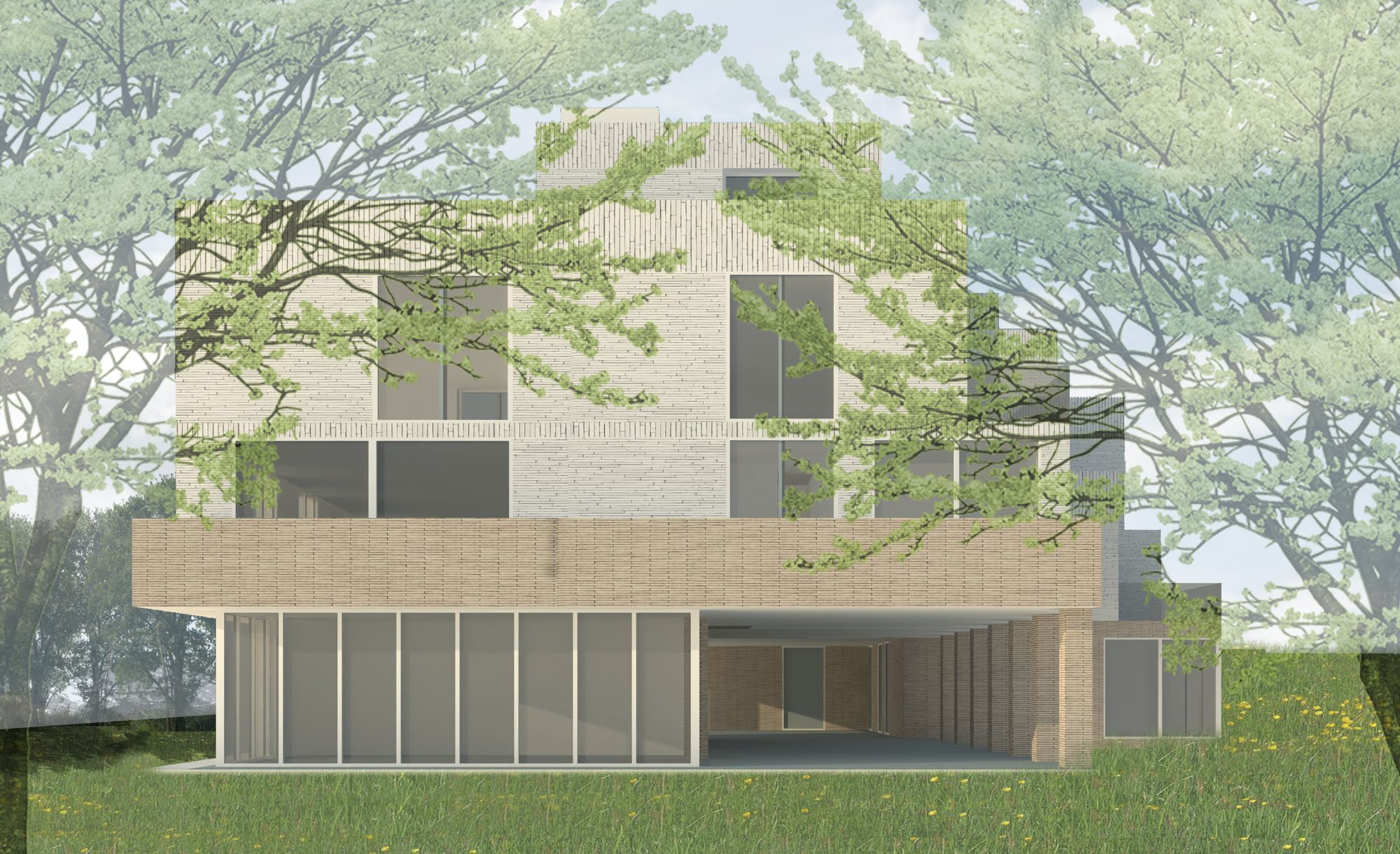
Let's build together

Do you have a specific project you would like to discuss? Would you like to apply spontaneously?
Contact us, Katrien will be happy to help.
get in touch









